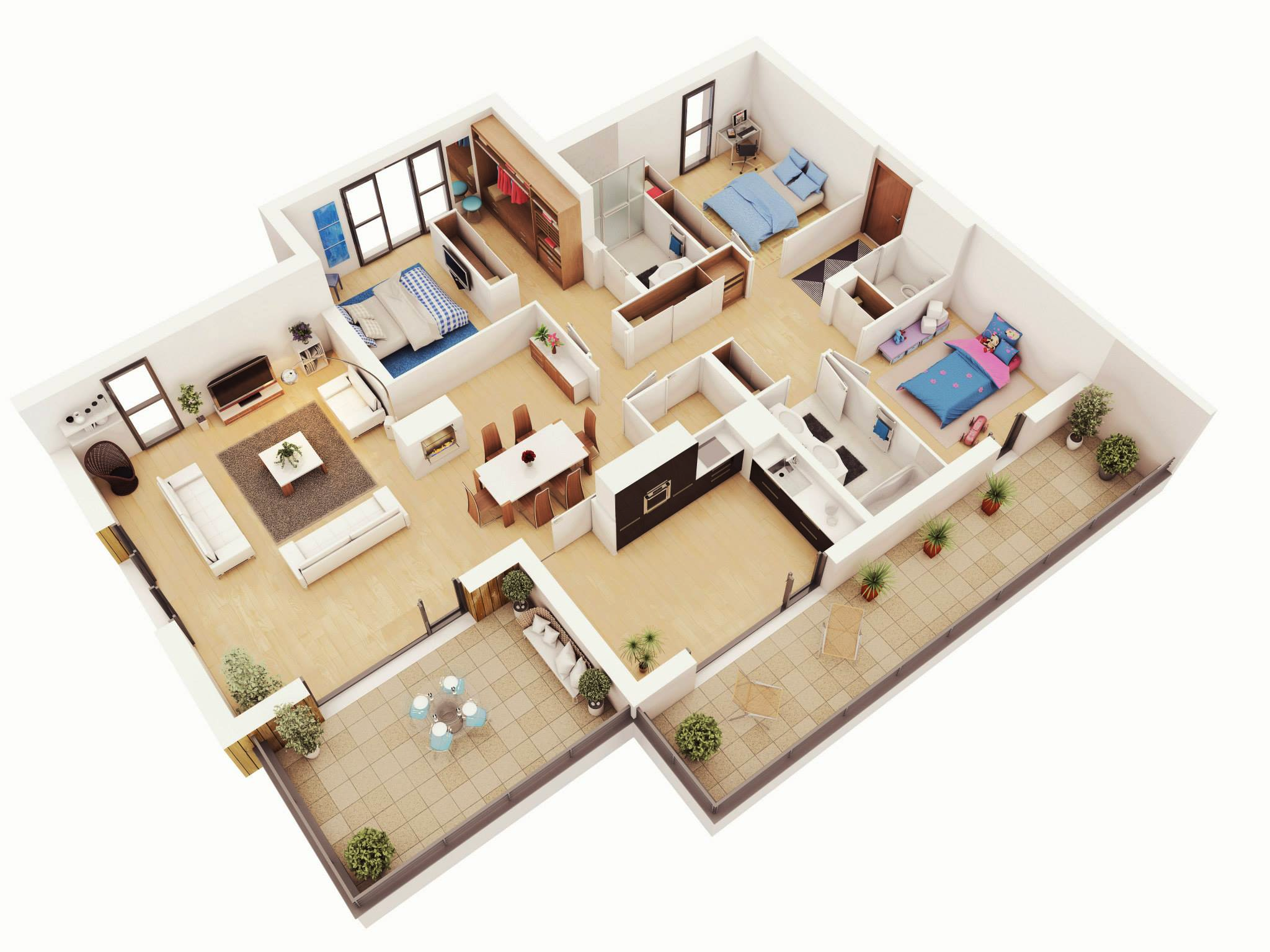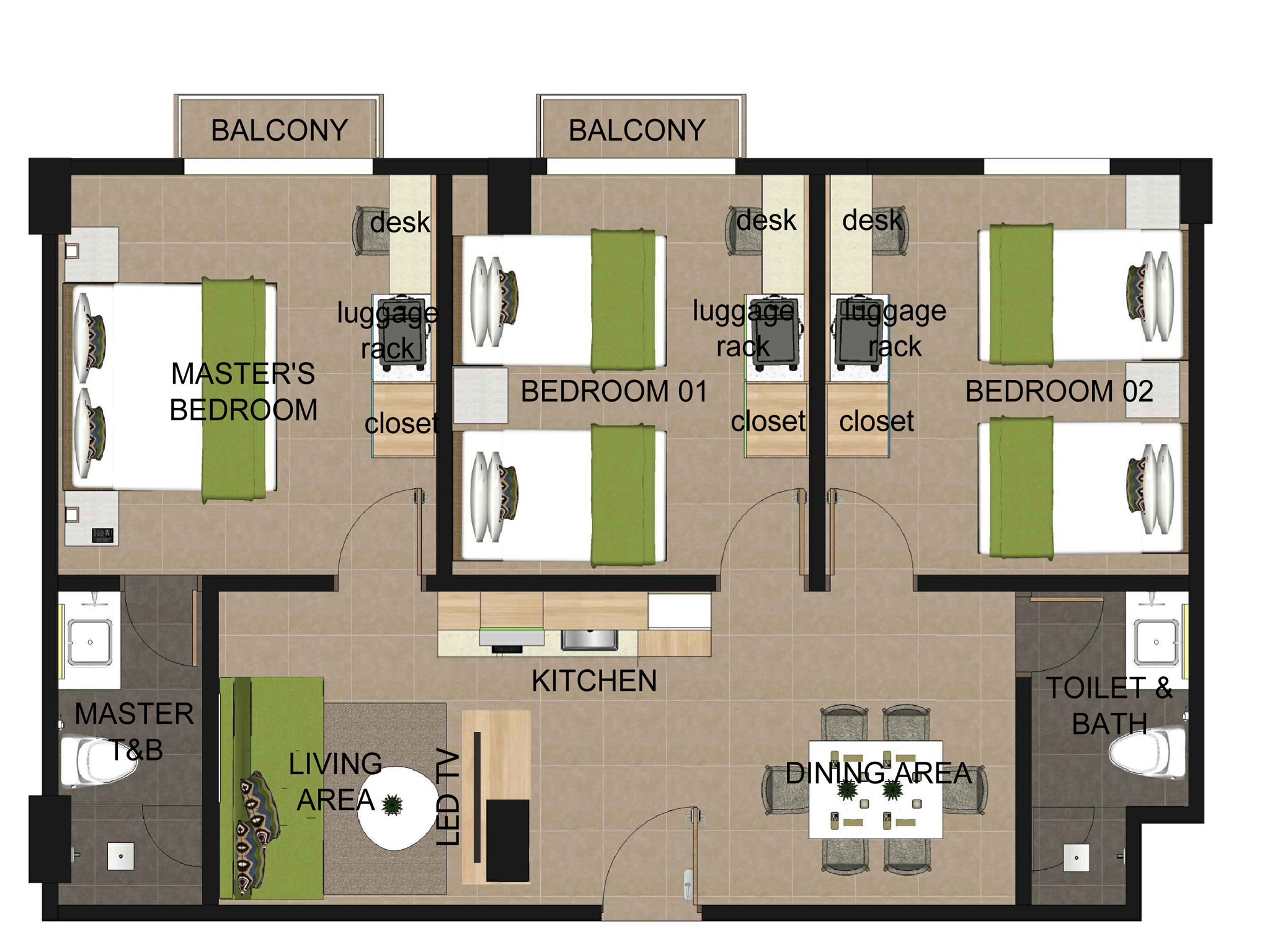Legal and Regulatory Considerations: Maximum Occupancy 3 Bedroom House

Determining the maximum occupancy of a 3-bedroom house is crucial for ensuring safety, compliance with local regulations, and minimizing potential legal liabilities. This section delves into the legal framework surrounding occupancy limits, including zoning ordinances, building codes, and their impact on property insurance and liability.
Zoning Ordinances and Building Codes
Zoning ordinances and building codes are the primary legal frameworks that establish maximum occupancy limits for residential properties. These regulations are typically enforced at the local level by municipalities or counties.
- Zoning Ordinances: These regulations dictate the permitted uses of land within a specific area, including residential density. They often specify the maximum number of occupants allowed per dwelling unit based on factors like the number of bedrooms, square footage, and available amenities.
- Building Codes: Building codes establish minimum safety standards for construction and occupancy, focusing on factors like fire safety, egress, and sanitation. They may also specify occupancy limits based on the size and layout of the dwelling unit, ensuring adequate space for each resident.
For instance, a city’s zoning ordinance might state that a 3-bedroom house can accommodate a maximum of six occupants, while the building code might require a minimum of one bathroom per three occupants to ensure adequate sanitation facilities.
Impact on Property Insurance and Liability
Exceeding the maximum occupancy limits set by local ordinances or building codes can have significant implications for property insurance and liability.
- Property Insurance: Insurance companies often require homeowners to comply with local occupancy regulations. Failure to do so could lead to policy denial or cancellation, leaving homeowners financially vulnerable in case of accidents or damage. Additionally, insurance premiums might increase if the number of occupants exceeds the policy’s limit, as increased occupancy can raise the risk of accidents and claims.
- Liability: Landlords or homeowners who exceed occupancy limits may face increased liability in case of accidents or injuries. If an injury occurs due to overcrowding or inadequate safety measures, the property owner could be held responsible for negligence. For example, a fire caused by overcrowding could result in significant liability for the property owner if they were aware of the occupancy violation.
Potential Legal Consequences, Maximum occupancy 3 bedroom house
Violating occupancy limits can lead to various legal consequences, including fines, penalties, and even eviction.
- Fines and Penalties: Local authorities can issue fines for exceeding occupancy limits. The amount of the fine can vary depending on the severity of the violation and the local regulations. Repeated violations may result in escalating fines or even legal action.
- Eviction: Landlords have the legal right to evict tenants who exceed the maximum occupancy allowed by the lease agreement or local ordinances. This could lead to a loss of housing for the tenants and potential legal disputes.
- Criminal Charges: In some cases, exceeding occupancy limits can be considered a criminal offense, especially if it involves overcrowding that poses a significant safety hazard. This could lead to criminal charges and fines.
“It is crucial for homeowners and landlords to understand and comply with local occupancy regulations to ensure safety, prevent legal repercussions, and maintain the value of their property.”
Factors Influencing Maximum Occupancy

The maximum occupancy of a three-bedroom house is determined by a complex interplay of factors that prioritize safety and ensure the well-being of its inhabitants. These factors encompass both physical characteristics of the dwelling and the nature of its occupants.
Bedroom Size and Square Footage
The size of bedrooms and the overall square footage of the house play a crucial role in determining maximum occupancy. Larger bedrooms generally accommodate more occupants comfortably, while a larger overall square footage allows for greater space per person. Building codes often specify minimum bedroom sizes based on the number of occupants they are intended to house. For instance, a bedroom intended for two occupants might require a minimum area of 100 square feet, while a single-occupant bedroom might require 70 square feet. This ensures adequate living space for each individual.
Occupant Age, Presence of Children, and Accessibility Needs
The age of occupants, presence of children, and accessibility needs significantly impact maximum occupancy. For example, a house occupied by a family with young children may require a lower occupancy limit than a house occupied by adults only. This is because children require more space for play and supervision. Similarly, houses with occupants who have mobility limitations may require modifications to ensure safe and accessible living spaces. This might involve wider doorways, ramps, and other features that accommodate wheelchairs or other mobility aids.
Safety Regulations
Safety regulations, such as fire codes and egress requirements, play a vital role in determining maximum occupancy. Fire codes typically specify the maximum number of occupants allowed in a dwelling based on factors like the number and size of exits, the type of building materials used, and the presence of fire suppression systems. Egress requirements ensure that occupants can safely evacuate the dwelling in case of an emergency. These requirements typically involve specifying the minimum number of exits and the width of doorways, stairwells, and hallways. The goal is to ensure that all occupants can safely evacuate the dwelling within a reasonable timeframe.
Practical Considerations for Occupancy

Maximum occupancy 3 bedroom house – While legal and regulatory frameworks provide a baseline for maximum occupancy, practical considerations play a crucial role in ensuring a safe and comfortable living environment for occupants. This section explores the practical aspects of occupancy, including factors that influence maximum occupancy, strategies for maximizing occupancy while maintaining safety, and common challenges associated with overcrowding.
Maximum Occupancy Based on Factors
The maximum occupancy of a 3-bedroom house can vary depending on several factors, including location, building type, and local regulations. The table below illustrates typical maximum occupancy based on these factors:
| Factor | Typical Maximum Occupancy | Notes |
|---|---|---|
| Location (Urban vs. Rural) | Urban: Higher | Urban areas often have stricter regulations due to higher population density. |
| Building Type (Single-Family vs. Multi-Family) | Single-Family: Lower | Single-family homes typically have smaller square footage and fewer amenities than multi-family units. |
| Local Regulations | Varies | Local regulations may specify maximum occupancy based on factors such as bedroom size, square footage, and fire safety requirements. |
Maximizing Occupancy While Maintaining Safety and Comfort
Maximizing occupancy while ensuring safety and comfort requires a thoughtful approach. Here are some tips and strategies:
- Prioritize Adequate Space per Occupant: Ensure each occupant has sufficient space for sleeping, living, and storage. This is crucial for maintaining privacy and reducing stress levels.
- Consider Room Functionality: Designate specific rooms for different purposes, such as bedrooms for sleeping, living rooms for gathering, and kitchens for cooking. This promotes organization and reduces clutter.
- Optimize Storage Solutions: Utilize space-saving furniture, built-in storage, and vertical storage solutions to maximize available space and minimize clutter.
- Maintain a Clean and Organized Environment: Regular cleaning and organization are essential for maintaining a healthy and comfortable living environment, especially with multiple occupants.
- Promote Open Communication: Encourage open communication among occupants regarding shared spaces, schedules, and household responsibilities to foster a harmonious living environment.
Common Challenges and Solutions Related to Overcrowding
Overcrowding in 3-bedroom houses can lead to various challenges, including:
- Limited Privacy: Overcrowding can make it difficult for occupants to have personal space and privacy.
- Increased Stress and Conflict: Limited space and shared resources can contribute to increased stress and conflict among occupants.
- Reduced Comfort and Well-being: Overcrowding can negatively impact occupants’ comfort and well-being, leading to feelings of claustrophobia and discomfort.
- Safety Concerns: Overcrowding can pose safety hazards, particularly in terms of fire safety and emergency evacuation.
To address these challenges, consider the following solutions:
- Create Designated Personal Spaces: Provide each occupant with a dedicated space for personal belongings and activities.
- Establish Clear Rules and Boundaries: Set clear expectations for shared spaces, schedules, and household responsibilities.
- Prioritize Open Communication: Encourage open communication and conflict resolution to address issues promptly.
- Ensure Adequate Ventilation and Lighting: Maintain proper ventilation and lighting to create a more comfortable and healthier living environment.
- Conduct Regular Safety Checks: Conduct regular fire safety checks and ensure that emergency exits are clear and accessible.
A three-bedroom house comfortably accommodates a family, with ample space for each member to enjoy their privacy. However, when considering renovations, it’s crucial to prioritize the shared spaces, such as the bathroom. For inspiration, explore the latest trends in bathroom showrooms in New York , where you’ll find innovative designs and luxurious fixtures that can transform your bathroom into a sanctuary.
This investment will enhance the overall living experience for everyone in the house, making it a truly comfortable and inviting space for all.
A typical 3 bedroom house might comfortably accommodate 6-8 people, depending on the size of the bedrooms and common areas. For a more luxurious experience, especially when traveling with a larger group, consider 3 bedroom suites in Las Vegas.
These suites often feature spacious living areas, multiple bathrooms, and lavish amenities, perfect for hosting a memorable getaway. While the maximum occupancy of a 3 bedroom house may vary, a Las Vegas suite provides a defined capacity, ensuring a comfortable and enjoyable stay for everyone.